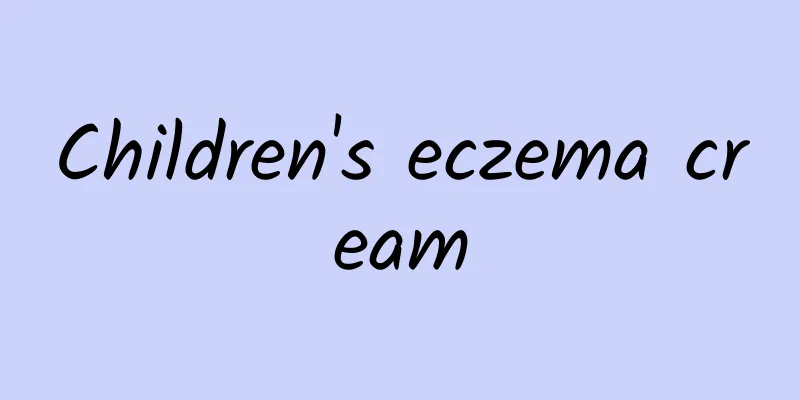Don’t buy crafts made from this kind of snail! Otherwise, they will also go extinct…

|
If you go to the market on weekends, you will definitely see many stalls selling handicrafts. Among the dazzling array of goods, you will definitely see exquisite handicrafts made of snails. In fact, making snails into decorations or handicrafts has existed since ancient times. In China, we use "mother-of-pearl" to describe this kind of decorative craftsmanship, which refers to using clam slices, shells or seashells to grind into thin slices of figures, flowers and birds, or words, and inlaying them on the surface of objects according to the needs of the picture. The poet Liu Yingbin used "mother-of-pearl makeup into emerald light" to describe the mother-of-pearl craft. Rosewood inlaid with mother-of-pearl and plum and bamboo pattern pen holder, Image source: The Palace Museum Why do people choose mollusk shells? What is its charm? If mother-of-pearl is produced indiscriminately for the sake of its beauty, what impact will it have on the natural environment? 01 A variety of molluscs Mother-of-pearl has become a craft thanks to the rich species diversity and various shapes of mollusks. Molluscs are the second largest animal phylum in the animal kingdom after arthropods and one of the most abundant and diverse groups of marine animals. Copyright image, no permission to reprint One of the unique features of mollusks is that their body patterns are extremely varied. There are only shapes you can't imagine, and there are no "poses" that mollusks can't make. The secret lies in the Hox gene , which plays an important role in the body structure of mollusks. Compared with other animals, the expression patterns of Hox genes in mollusks are more diverse . 02 Not all snails can be made into handicrafts As a traditional Chinese handicraft, the exquisite mother-of-pearl certainly attracts people's love. But it should be noted that not all snails can be used as raw materials for mother-of-pearl production. For example, the two protagonists of this exhibition - the luminous salamander and the giant clam . Although these animals are beautiful, they are also national protected animals, and their ecological value is much higher than their ornamental value . Biologically, the Noctilucent Turbot is a species of the Turbot family of the gastropod class. Its shell is large, hard and thick, and its height is almost equal to its width. Its shell can be up to 20 cm long and weigh up to 2 kg. It is distributed in coral reefs in the Indian and Pacific Oceans. It is also distributed in the southern tip of Hainan Island, the Xisha Islands, the Nansha Islands, and southern Taiwan. Turbots have beautiful mouth covers, and the inside of the mouth covers is smooth and keratinous, which has a natural beauty. The shell of the luminous turban shell, image from Wikipedia The luminous turban shells do not glow in the dark, but are named after the pearl layer inside their shells that shimmers with a gorgeous luster . The surface of the luminous turban shells is dark green, with brown, white, or red rings. The shell mouth is large and nearly circular, and the inside is silvery white. The luminous turban shells are large, and a variety of patterns can be carved on the shell surface. The pearl layer inside is thick, so it has been a beautiful ornamental and handicraft since ancient times, and has become an important raw material for making mother-of-pearl. Like the glowing turban, the giant clam also has a long history. The giant clam is a general term for multiple species under the genus Tridacna, and is also the largest bivalve shell in the world , 1.02 meters long and weighing 300 kilograms. The shell of the giant clam is white, with a mantle and symbiotic algae on the surface, showing a variety of colors. It is mainly distributed in the shallow water environment of the coral reef system in the tropical Pacific-Indian Ocean. Giant clam, image from Wikipedia The name "Tridacna" originated in the Han Dynasty. It was also called "Chequ" because its shell had a groove that looked like a "wheel rut". In the Eastern Han Dynasty Fu Sheng's "Shangshu Dachuan", there is a story about San Yisheng who used Tridacna to present to King Zhou of Shang and successfully rescued King Wen of Zhou. The rescue of King Wen by Tridacna shows its value. Later in the Qing Dynasty, the court beads worn by the second-rank officials when they went to court were made of Tridacna. In addition, giant clams were also important meteorological observatories in ancient times, recording the evolution of ancient climates. This is mainly due to the fact that giant clams have a long lifespan of 50-100 years , which means that a single giant clam can provide 50-100 years of climate or weather records. Giant clams are like trees. Once they are fixed on a coral reef, they will never move. This is similar to a fixed weather station, which is also the reason why they can record weather. On the contrary, if giant clams keep moving, it is difficult to record weather changes in a certain place. The cooperative symbiosis between giant clams and zooxanthellae is key to recording weather. Zooxanthellae live on the mantle on the surface of giant clams, and use photosynthesis to provide energy for giant clams. The photosynthesis of zooxanthellae is sensitive to weather changes. Once the weather changes, its photosynthesis efficiency will change, which will directly lead to changes in the growth rate of giant clams. The growth rate of giant clams can be reflected from the lamination on the cross section. This lamination is the "annual ring" of giant clams. Because of the different growth rates, its carbonates show different optical characteristics. Through the annual laminae, we can learn about the weather changes that giant clams have experienced during their lifespan. With the help of modern isotope technology, we can divide a year into 12 months and obtain the average temperature and climate variability over a total period of 50-100 years. 03 Conch under threat Creatures such as the glowing turbans and giant clams are important components of invertebrates in aquatic ecosystems and have a significant impact on marine ecosystems. They feed directly on plants, algae and organic debris and are also important links in the marine food web. Climate change has caused rising water temperatures and ocean acidification, which has also put pressure on the marine ecosystem, making these marine mollusks one of the first animals to suffer. This is because many of them coexist with algae, which are more sensitive to environmental changes. In addition, fishing, co-catch and marine pollution caused by human activities also affect the survival of these marine organisms. Overfishing threatens the survival of marine mollusks. In addition, many merchants and art lovers covet the value of giant clams and catch them to make handicrafts for illegal profit. This not only harms these precious marine creatures, but also causes some traditional Chinese crafts to be misunderstood by people. At present, the Noctilucent Turbot is listed in the National Class II Protected Wildlife List, all species of the Tridacna family are listed in the IUCN Red List of Threatened Species, and the Tridacna cuspidata is listed as a National Class I Protected Marine Life. It should be noted that protected organisms such as giant clams and corals, both living and dead, are protected by law. For the earth, it is urgent to protect these marine mollusks! This article is produced by Science Popularization China, produced by Zhao Xumao (Lanzhou University), and supervised by China Science Popularization Expo. The cover image of this article is from the copyright gallery, and the image content is not authorized for reproduction |
<<: Laji Mountain: The unique romance of summer on the plateau
>>: What is the relationship between duck shit scented tea and duck shit?
Recommend
Weekly Science Talk | How did giant pandas transform from carnivores to “vegetarians”?
The cute giant pandas are loved by people. They a...
Rubbing ginger on the scalp will help hair grow? Some people may even get balder the more they rub!
...
Who is not suitable to drink honeysuckle?
Honeysuckle is a relatively common and precious h...
The name "Jiangnan on the Great Wall" is well deserved! Build a strong ecological barrier at the stroke of the Yellow River!
"The Yellow River flows westwards and breaks...
Curiosity, hard work, persistence, and questioning... This is how we prove that dinosaurs turned into birds
Xu Xing, author of the People's Education Pre...
A loud snore is no friend! Is a ventilator useful to get rid of snoring?
I saw some netizens saying that the elderly in th...
Ancient energy-saving black technology! The 800-year-old oil-saving lamp contains the neglected beauty of science
Mr. Chen Yinke spoke highly of the historical dev...
What are the effects and functions of snake tongue grass
Many people rely on Western medicine to treat the...
Omnisend: Survey shows that Temu's repeat customer rate reaches 34%, exceeding eBay's 29%
Less than two years after entering the U.S. marke...
The efficacy and function of peony root
Everyone is familiar with the root of peony. It h...
Comparison of 5,000 years of history between China and foreign countries, understand it in one go!
...
What to cook with Pseudostellaria heterophylla
Pseudostellaria heterophylla is also a type of gi...
What to eat when progesterone is low
Progesterone can help many expectant mothers to d...
What are the effects of Cynomorium and Cistanche?
As the pressure of life increases, irregular life...









